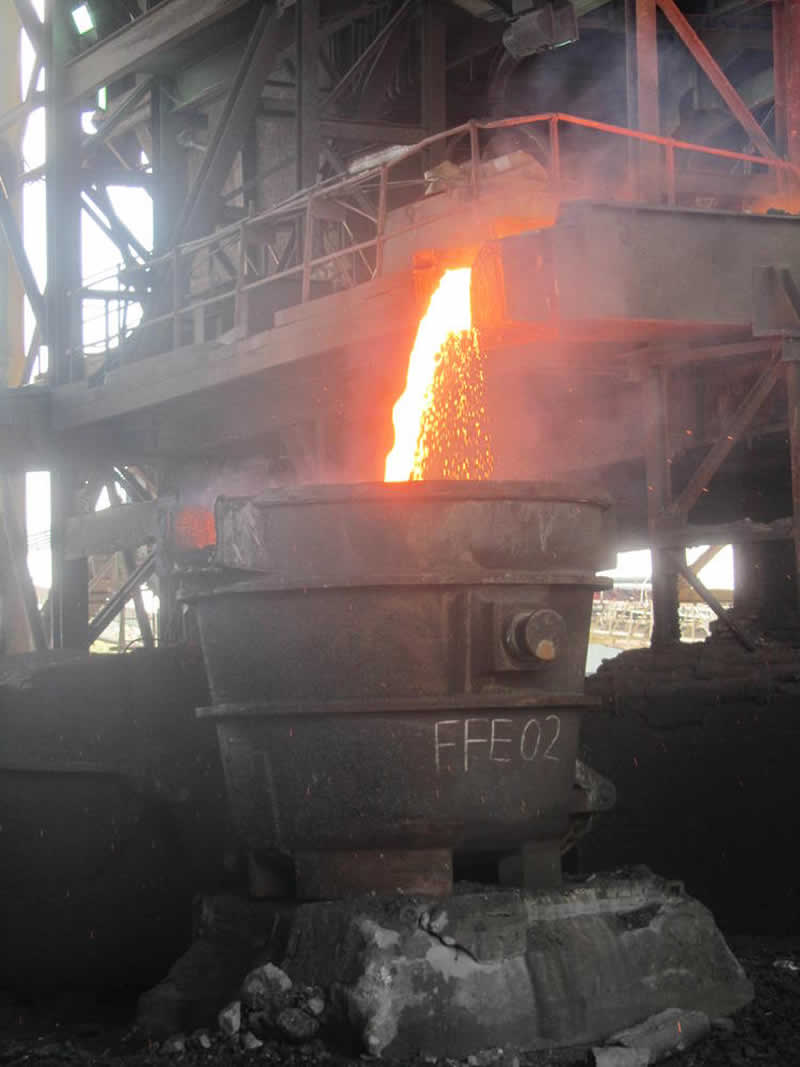
The Sunday Mail

ZIMPLATS Holdings Ltd, Zimbabwe’s biggest platinum producer, has completed a feasibility study for the modification and refurbishment of its Base Metal Refinery (BMR) at the Selous Metallurgical Complex (SMC), and now forecasts that the whole project — designed to convert platinum matte into final base metals — will gobble an estimated US$100 million.
Initially it was estimated that setting up a platinum refinery will require a whopping US$3 billion.
The miner recently appointed a team of experts who are expected to issue a report in the next few weeks, detailing the full requirements necessary for the plant to be operational.
Last week, The Sunday Mail Business gathered that while the BMR is currently mothballed, the plant can operate effectively if it is fitted with new equipment.
Zimplats owns a base metal refinery that separates minerals like nickel, chrome and copper from platinum metal groups, but says outdated technology makes it too expensive to run.
Zimplats currently sends platinum concentrate to South Africa for processing, a development economic experts argue has prejudiced the country of potential revenue and jobs.
Government has been ratcheting up pressure for mining companies to beneficiate locally produced minerals in order to derive the maximum possible value from mining activity.
PGM (platinum group metals) producers are considering jointly building a smelter, a BMR and a precious metals refinery (PMR) in order to make the project viable.
At 400 000 ounces per year, current platinum output from Zimbabwe’s three platinum producers — Zimplats, Mimosa and Unki — is significantly lower than the 500 000 ounces per year required to operate the refinery, platinum producers believe.
Zimplats head of corporate affairs Mrs Busi Chindove said last week the company will only be able to know the total cost of the project after full evaluations on recommendations made through the feasibility study.
She, however, indicated that the BMR project was being carried out under Zimplats’ US$250 million infrastructure development programme, which will see the company open new mines and set up new plants.
The refinery is forecast to be functional by year end.
Zimplats’ current major operations include the Ngezi mining operations, which consist of three functional mines and one under construction.
It also has two concentrators in Ngezi and the SMC that comprises a concentrator and smelter.
“The company is committed to the concept of beneficiation, hence, we are making strides in setting up the base metals refinery. The plant is already in place and with reasonable investment into refurbishment, modification and capacity expansion, the BMR can process the PGMs beyond concentrate and matte,” she said.
Mrs Chindove added that Zimplats had invested over US$30 million in carrying out a study for the establishment of the first-ever platinum group of metals refinery in the country.
She indicated that the development is a precursor to the setting up of a PMR that is expected to have downstream effects for industry and employment in the communities.
Government has identified value-addition and beneficiation across all sectors of the economy as key measures towards setting the economy on a sustainable growth path.
In order to discourage the export of platinum ore, Government has imposed a 15 percent levy on raw platinum exports.
A total ban is set for 2015.
Zimplats chief executive officer Mr Alex Mhembere said beneficiation projects are set to begin in July this year as a two-stage process.
“Stage 1 will focus on refurbishing the existing Base Metals Refinery (BMR) at the Selous Metallurgical Complex (SMC) at an estimated cost of $100 million. It is envisaged that this project will take 24 months to complete and on commissioning will process matte from the existing smelter to produce final base metals. Work to secure the funding and the necessary Goverment approvals of a project of this size is already underway ahead of the envisaged July 2014 project start date.
“Stage 2 will encompass an expansion of the BMR to accommodate all Zimplats’ matte production as well as concentrate production from Mimosa and Unki. This will entail an expansion of the existing Smelter from 13MW (mega watts) to 16MW, construction of a new 19MW smelter, an acid plant to handle sulphur dioxide emissions and parallel process modifications as may be required at Bindura Nickel Corporation (BNC) and Empress Nickel Refinery (ENR) to improve national output. This stage will cost an estimated $500 million (still to be confirmed) and will involve other partners in Zimbabwe,” said Mr Mhembere.
As most of the beneficiation plants need critical mass, platinum producers are gradually ramping up production.
Zimplats is presently embarking on its phase II expansion programme, which, essentially, is an underground mining development that will see the miner opening up new mines to replace the two (Ngwarati and Rukodzi) that have been exhausted.
The new project will reach full production in 2015 and is expected to add 90 000 ounces of platinum to the company’s annual production.
Consequently, national output is projected to climb to around 450 000 platinum ounces annually.
Zimplats’ Mupfuti mine manager Mr Paul Muramba said in a recent interview the company, as part of its infrastructure development plan, intends to construct crushers underground in order to boost production.
“We are going to set up underground crushers in a bid to increase our productivity. By September 14 this year, one of the crushers should be operational, while we expect the second one to be complete early next year,” he said.
Market watchers believe that subject to additional investment Zimbabwe’s platinum production will catch up with Russia, the world’s second largest producer of the metal, by 2017.
Zimbabwe has the world’s second-largest known platinum deposits after South Africa and accounts for about 6 percent of global production.




